Feeding Shark Conservation
Shark feeding is a controversial practice, but is it as bad as we think, and can it actually benefit conservation?
Words by Christina Zenato
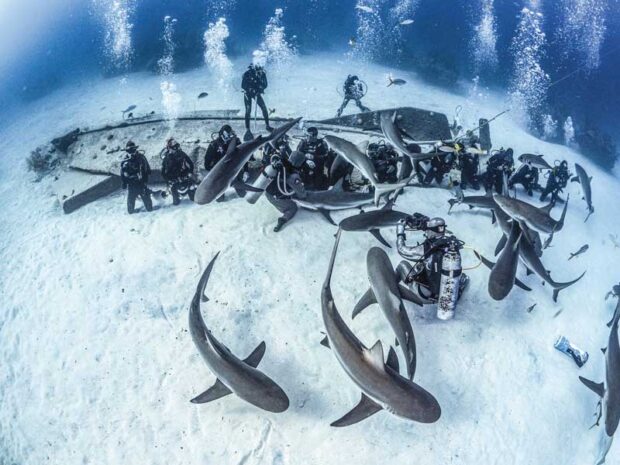
Shark diving is a growing market. Whether it’s to quench the human desire to come face to face with our fears, or to feed our fascination for one of the most ancient creatures on this planet, there is undoubtably expanding interest in sharks.
Obviously, the ideal way to observe sharks would be in their natural environment. While this might be simple enough for certain shark species (for example, congregations of whale sharks feeding on plankton on the surface), sharks are, in general, hard to find. Many of the locations are remote, which makes them expensive to reach and only open to a select few divers. Shark feeding was born to bring sharks closer, to satisfy growing human interest and curiosity.
Dive operators who partake in shark feeding are frequently criticized for their practices and business choices. Most shark dives attract some of the bigger and potentially dangerous species to humans. To create a safe encounter, I believe it’s important to abide by shark feeding’s golden rule: control the food to control the sharks.
For the purposes of this article, I’m defining shark diving as any diving where the primary motivation is to see sharks through provisioning in the form of baiting, chumming, or feeding; and I’m not going to address shark feeding or chumming for observation of sharks from cages.
Common practices
‘Chumming’ is the act of dispersing small particles of food and blood, primarily fish, into the water to create a general area of attraction, which sometimes extends for miles. This smelly slick sparks the interest of sharks in the area and attracts them closer to the observation point.
‘Feeding’ provides provision through various methods to sharks, either by direct or indirect contact.
In the shark diving industry, we often find the employment of both techniques.
Shark feeding has been a work in progress for many years. At the beginning, it included a lot of trial and error.

One of the original methods of feeding was via frozen chum. Operators would collect discarded parts of fish in a bucket, cover them with water, and freeze overnight to create a fish ‘popsicle’. The chumsicle would dangle from a rope attached to the boat at a designated dive site. Divers would either float around the chumsicle or sit on the ocean floor, while the sharks—often of different species— would self-serve at the free-for-all buffet. The purpose of this feeding method was to separate the divers (including staff) from the food, preventing sharks from associating any diver as a food source. Unfortunately, this practice had one melting point. Shark feeding operators always avoid putting guests and observers in direct contact with the provisioning of the sharks, but as the frozen ball defrosted, sharks would grab falling pieces and swim as fast as they could away from the action. Other sharks would often follow them, trying to steal some of the food. Often they would swim directly to the divers, creating an uncontrolled situation.
Now, several decades later, there are tested and more refined ways to provide food to sharks than there were in the beginning. In some locations, food dangles from the boat inside containers, crates, or cylinders with holes or openings, allowing the scent and small pieces of food to fall out while the containers bob up and down in the water column. Again, divers float around the container or sit on the ocean floor either in a line or circle, keeping a certain distance away from the food source. Usually, the operator employs a safety diver or a shark handler (or both) to manage the divers and the sharks approaching the food source.
Other operators use direct feeding, either by hand or by a small pole. The sharks approach the feeder and receive a piece of the bait. The container and techniques vary with each operator (and in some places between feeders from the same company).
The biggest argument put forward against the provisioning of sharks is that by feeding sharks, sharks learn to associate people with food. The suggestion is that they will harass and bite divers visiting the same site when the operators feeding the sharks are not present.
The reality is that sharks are opportunistic feeders and any chance for a free meal will attract them. To properly address the concerns that shark feeding teaches them to bite humans, we need to look at fishing and spearfishing. Shark diving is perhaps forty years old; fishing is as ancient as humankind on this planet.
The first time we put a canoe in the water and went fishing, we attracted sharks; each time we cleaned a fish from shore or the boat, we attracted sharks. Aristoteles described Mediterranean sharks, and their likeness appears in the mosaics of Pompei. If feeding sharks teaches them to bite humans, sharks should have learned to associate boats with food. They should be present every time a boat is in the water, and anyone who enters the water from a boat should be attacked as potential food. By now they also should have learned to associate any freediver with a possible meal. Yet millions of people go in the ocean every day, swimming, scuba diving, snorkeling, and fishing; some areas are the territory of shark species that are considered potentially dangerous to humans. Comparing the numbers of people swimming in those environments and the number of shark attacks, we quickly conclude that encounters where sharks bother humans are scarce.
The operators who take divers on structured shark dives and then take other divers in the same areas for regular excursions are tangible proof that sharks do not associate humans with food.
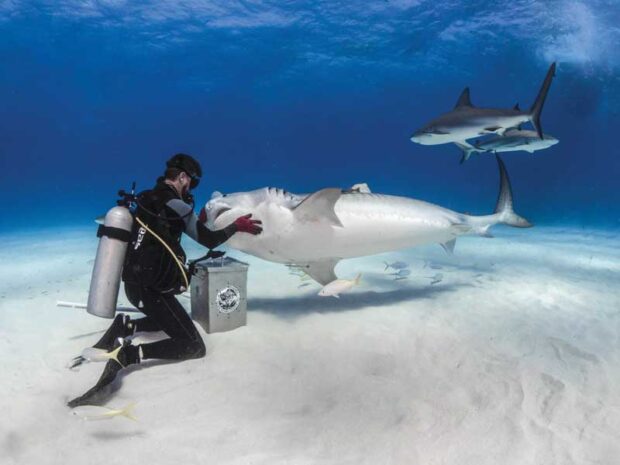
Following instincts
Some people worry that provisioning by humans changes sharks’ diets as well as their habits. They fear that this repetitive presence could disrupt the hunt for natural prey and conditioning, pushing the animals to override their natural cycles with food dependence, as has been observed during studies of land-based animals. However, underwater and land-based animals live differently. Sharks possess seven senses (possibly eight); these are unique to them and their underwater world. Numerous studies have examined sharks’ behaviour in popular shark feeding sites. They noted that no matter the presence of food, sharks still follow their instincts and leave the area when the season changes or when their natural life cycle requires. I have been keeping a dairy for over ten years on the behaviour of the Caribbean reef sharks I work with, noting when they leave for mating and giving birth, when they come back, and other behavioural changes.
A few years ago, a scientist conducted a DNA study through tagging and collecting tissues on a specific group of sharks on the island of New Providence. The results showed that only 50% of their total food intake came from food from the local dive operator and that the feeding didn’t influence the animals’ behaviour. The study indicated that the sharks were still scouting their territory and finding direct feeding from the ocean.
Sharks don’t become dependent on human feeding and do not become aggressive if they have no access to it for long periods. While hurricanes are a terrible event for these islands, they serve to prove this point on an annual basis. The COVID-19 human pandemic has been the ultimate test. I stopped being able to go out with my sharks on March 15th, 2020, and I was able to resume briefly starting July 1st, 2020. On the first dive, we went on the reef, no food, no protection. It was a pleasure dive after so many months on land. I counted most of my sharks. I know everyone by name and appearance, so it’s easy for me to note them. They showed signs of mating, the pregnant females had already given birth, and they just swam around the site as if we had been in the water with them the day before. Furthermore, when we returned with food a couple of weeks later, they behaved in a controlled and comfortable manner. They didn’t manifest higher intensity behaviour or any form of threatening approach.
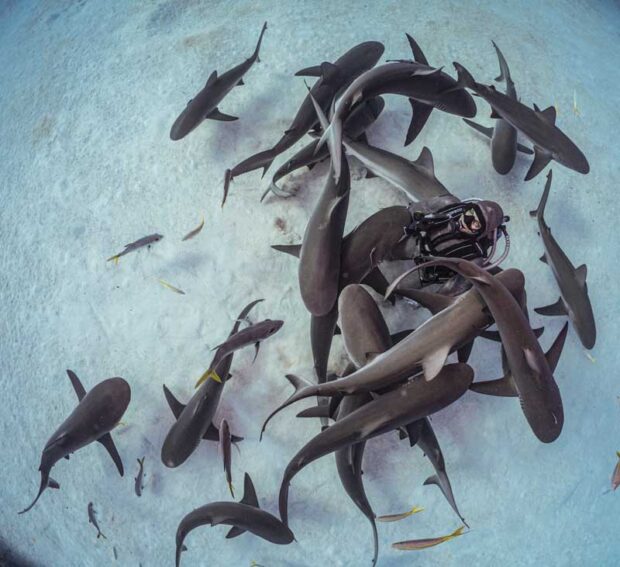
Human pressure
Another argument I hear is that we should leave sharks alone and the best way to observe sharks would be in their natural environment. It is a great concept and one I would agree with wholeheartedly. If a healthy population of sharks existed, we would see sharks everywhere. Unfortunately, our presence on this planet and the changes we have caused since the industrial revolution have put tremendous pressure on the oceans, including sharks. We slaughter sharks at a rate of millions per year, exceeding their ability to keep up with the numbers we take out of the ocean.
Most sharks present a combination of slow growth and late sexual maturity; they also have long reproductive cycles and low fertility.
Sharks have long gestation periods, from one to two years for many species, with long pauses between each pregnancy. Compared to other marine creatures, they also give birth to very small litters. The combination of these facts means sharks can’t compensate for the pressure posed by modern fishing operations. The high demand for shark fin soup and by-catch of sharks has put a strain on populations worldwide, bringing many species on the verge of extinction.
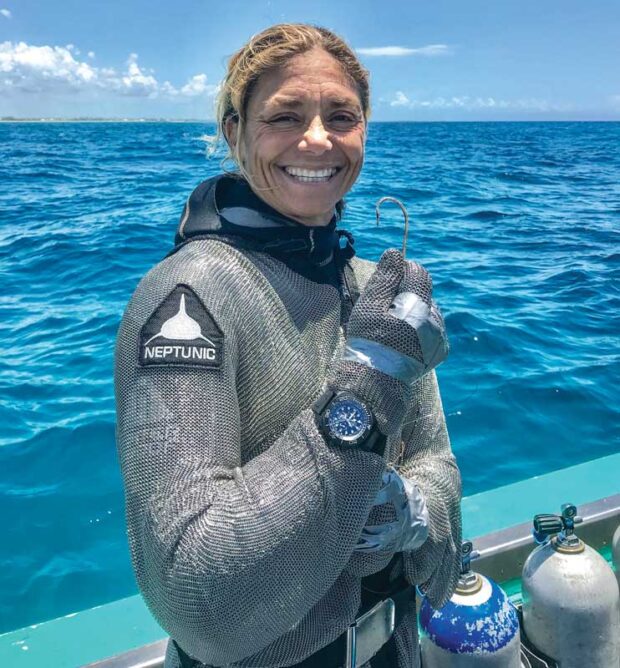
Economic benefits
Sharks are a vital component in the food web as an apex predator and mesopredator, a medium-sized, middle trophic level predator that preys and is preyed upon. Healthy and protected populations of sharks guarantee balanced eco-systems. Sharks play an essential role in maintaining an equilibrium between the species on the food web. They act as ocean cleaners and remove weak, sick, and dead creatures. By keeping control over the number of individuals per species, they maintain coral reef and seagrass habitats, contributing to a broader diversity and concentration of individuals. A majority of countries still rely on regular fishing as part of their economies. The healthy balance of ecosystems provided by the presence of sharks within the coastal areas causes an increase in local fauna and a source of food and income for the local population.
Shark tourism is a viable solution to shark conservation through economic benefits. A specific study of a small group of lemon sharks in French Polynesia puts the value of a single shark at over $300,000 in a twenty-year life span, increasing to $450,000 for a mature female.
Governments such as The Bahamas, Palau, and Fiji have realized the economic and natural advantages of promoting shark tourism and protecting sharks. The Bahamas registers an average annual 113.8 million dollars in revenue in shark tourism, 109.4 million directly from shark diving. These numbers exclude the extra income produced by the additional activities conducted both by the divers and their traveling partners during a single stay in the country for shark diving.
Shark feeding dives are beneficial to both sharks and local economies.
When operators conduct education in combination with the feeding activities, they contribute to dismantling myths. Sharks receive a better opportunity to survive. Divers surface with newfound knowledge, respect, and understanding of these animals and become ambassadors for better conservation policies.
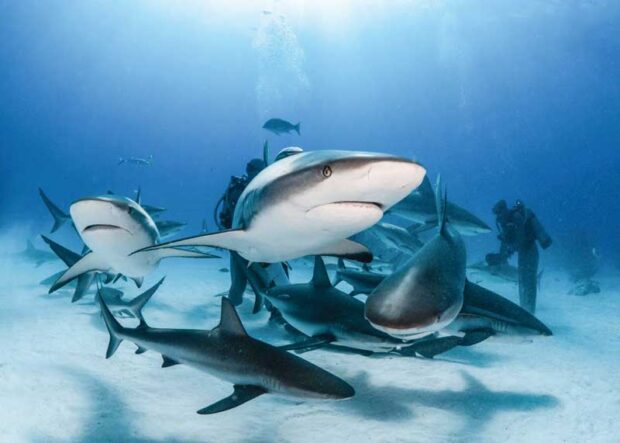
Conservation tool
For shark feeding dives to be a useful conservation tool, we need to approach them with respect and preparedness. Shark feeding techniques need to be applied, keeping in mind the safety of those watching the activity, the staff conducting it, and the sharks involved.
It is the operator’s responsibility to create safe procedures to mitigate risks. Sharks come in different sizes and feeding habits. It is crucial to understand how each species operates to create a memorable and safe encounter and maintain a positive relationship between sharks and the divers sharing the same space. Undoubtedly, those who have the opportunity to encounter sharks contribute to the change in the perception of these creatures. It is challenging to promote the conservation of large carnivorous animals. Sharks are not swimming, nerve ending jaws always ready to bite, nor are they the monster that populates our nightmares.
Unfortunately, shark feeding remains a contentious issue within the dive community. If we compare shark feeding to the threats that are affecting sharks worldwide, we quickly realize that it has a minimal impact and a broader benefit. Before outright condemning shark feeding dives, we should consider the benefits that they have brought to the different locations and perhaps even try a shark feeding dive.
Cristina Zenato is a proud member of the Women Divers Hall of Fame, The Explorers Club, and the Ocean Artists Society. She has been diving with sharks for the last twenty-five years. Her day-to-day work is with the Caribbean reef sharks in the Bahamas, but she has traveled the world and worked with twelve different species of sharks. Her field knowledge about sharks has been utilized by scientists and filmmakers, and she has been instrumental in pushing forward an image of sharks that shows their real nature. www.cristinazenato.com
Leave a Comment







